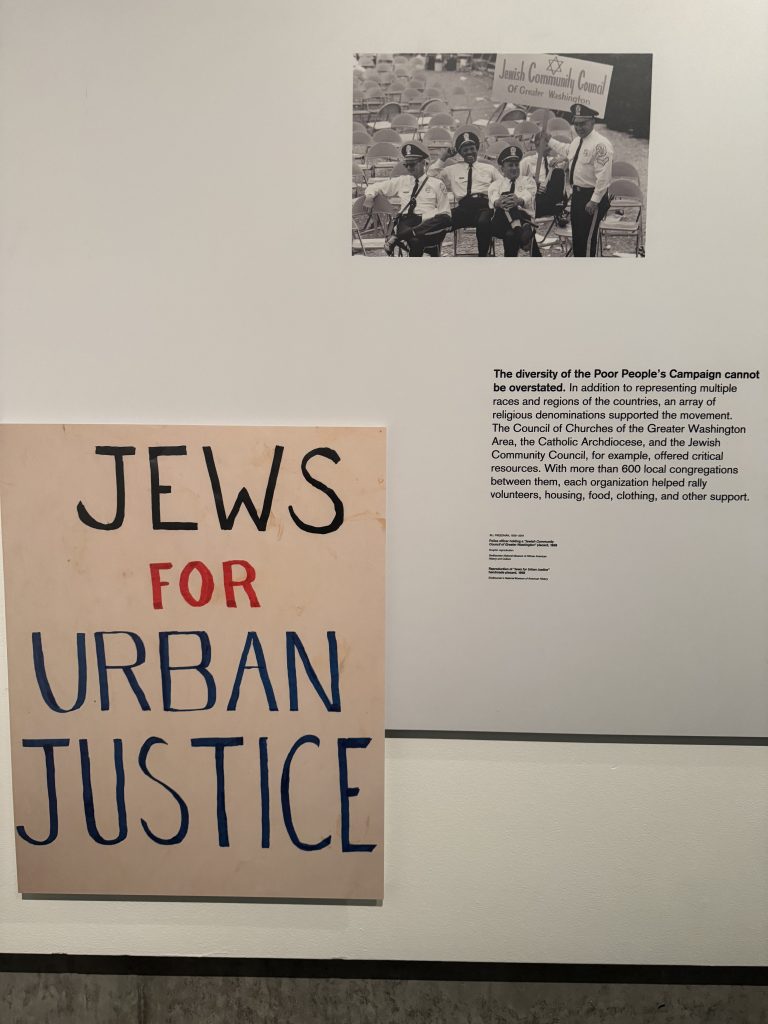Traveling Smithsonian exhibit brings 1960s activism to Tacoma
The “Solidarity Now!” exhibit reflects the power of activism and importance of social awareness surrounding poverty and housing crises.
In 1960s America, change was in the air. The civil rights movement, -protests the Vietnam war, presidential assassinations and more were all occurring. America was a melting pot of different values and ideas, and change was brewing left and right. A traveling exhibit curated by the Smithsonian, currently on view in Tacoma, explores this turbulent time.
“Solidarity Now!” was a social grassroots movement created in the 1960s by the famous civil rights leader Martin Luther King, Jr. and Southern Baptist minister and civil rights leader Ralph David Abernathy. The movement lasted six weeks and led to a massive protest at the Lincoln memorial in Washington D.C., where thousands of people marched for their lack of human rights and affordable housing.
Signs that read “Feed folks,” “No more Hunger USA” and “Stop Evictions” rose above people’s faces. Poor America was in a crisis and desperate for real change.
The movement, which sparked protest and activism, gained nationwide attention when it began in 1968. To commemorate the historical event, the Smithsonian Institution created the exhibition “Solidarity Now! 1968 Poor People’s Campaign” which aims to spotlight the significant movement and powerful voices of poor America.
Currently, the exhibit is being showcased by the Washington State Historical Society at the State History Museum, where you can see first-hand the photos and video footage of protests at Lincoln Memorial.
The exhibit includes several long walls of enlarged photographs of the protest. Significant individuals like MLK Jr. are shown speaking to protestors while describing the deplorable conditions America’s poorest communities were in.

What’s significant about this movement was the multiracial make-up for this event which included several different communities. Black, white, Asian, Native American, Latinx and Jewish communities were all marching for this one cause. Some of the footage that was played included speakers from Native American tribes who joined the fight for social justice.
One quote by Ralph Abernathy that was written on the wall of the exhibit read, “From the hot fields of Florida, Texas and California, we challenge the nation to recognize our right to a decent life.”
The movement not only challenged pre-existing notions of poor people and homelessness, but also put forth a new standard of living in the U.S. The conditions of poor people were not only deplorable, but inhumane and a violation of civil liberties. The moment aimed to raise the quality of life for poor America nationwide.
In one of the photographs at the exhibit, you see MLK jr. speaking with President Lyndon B. Johnson at the white house in 1961. Their conversation regarding race relations and voting rights ultimately helped boost momentum of rural America to begin the fight for poor people’s campaign.
President JFK created an antipoverty agenda during his time in office. After his untimely death, his Vice President Lyndon B. Johnson adopted the idea of “war on poverty” to continue the fight for poor people. The agenda which expanded into a policy platform titled “The Great Society” addressed employment and federal aid for impoverished communities.
President Johnson was able to expand employment programs, Medicaid and federal aid programs for elementary and secondary schools according to the exhibition. This change uplifted communities and leveled more opportunities for those in need. It brought awareness to the underlying systemic issues of race and poverty and showed that activism is a powerful tool for the backbone of America.
This exhibition currently runs until April 28, 2024. Pierce County students can receive a discount if they show their student ID card at any time. For more information or to purchase tickets you can visit the Washington State History Museum website: https://www.washingtonhistory.org/visit/history-museum-hours-and-admission/

Picture of entrance to exhibit. Photo by Rachel Meatte.






